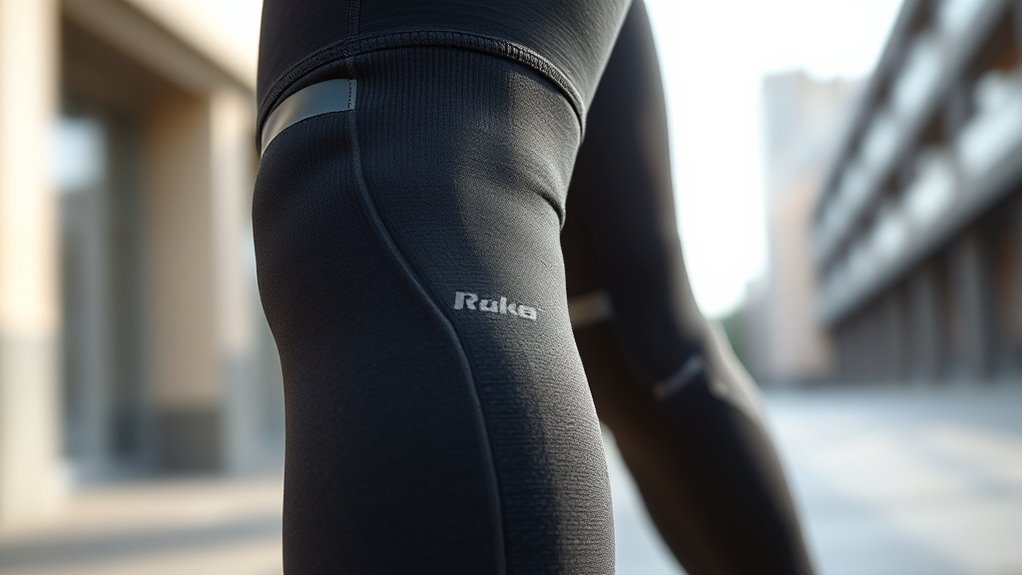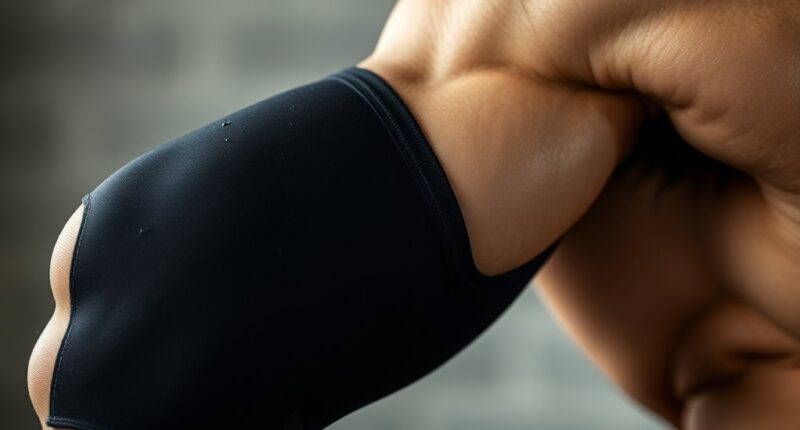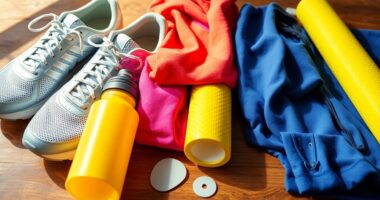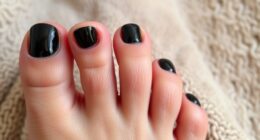Compression gear helps support your muscles and joints during activity, reducing muscle oscillation and microtrauma that can lead to injury. It improves circulation, delivering oxygen more efficiently, which speeds up muscle recovery and decreases soreness. By stabilizing your muscles and joints, it lowers the risk of strains and sprains, while managing swelling and inflammation. If you want to understand how to maximize its benefits for injury prevention and performance, keep exploring the details.
Key Takeaways
- Enhances muscle recovery and reduces soreness after intense workouts or competitions.
- Prevents injuries by stabilizing muscles and joints during physical activity.
- Limits muscle oscillation and microtrauma, protecting tissues from overuse damage.
- Manages swelling and inflammation, promoting faster healing and tissue health.
- Supports overall injury prevention when used during high-impact or repetitive training.

Compression gear has become a popular choice for athletes and fitness enthusiasts looking to enhance their performance and recovery. When you wear compression clothing, you provide your muscles with targeted pressure that can improve circulation and reduce muscle fatigue. This increased blood flow delivers oxygen more efficiently to your muscles, helping them recover faster after intense workouts. The recovery benefits of compression gear are well-documented; athletes often notice less soreness and quicker return to peak performance. By supporting your muscles and reducing oscillation during activity, compression gear minimizes muscle vibrations that can lead to microtears and fatigue, further promoting faster recovery.
Beyond recovery, compression gear plays a significant role in injury prevention. When you wear compression garments, you help stabilize muscles and joints, which can reduce the likelihood of strains and sprains. The snug fit ensures that your muscles stay aligned and supported during movement, decreasing excessive movement that could cause injury. For runners, compression socks can help prevent shin splints and calf strains by providing consistent pressure that supports the lower leg muscles. Similarly, compression sleeves for your arms or knees can help maintain proper joint alignment and reduce the risk of overuse injuries during repetitive motions or high-impact activities.
Another way compression gear helps prevent injuries is by reducing muscle oscillation, which occurs when muscles vibrate excessively during activity. Excessive oscillation can lead to microtrauma over time, weakening tissues and increasing injury risk. By limiting this movement, compression gear not only supports your muscles but also helps you maintain proper biomechanics. This added stability is especially beneficial during high-intensity or repetitive training sessions, where the risk of overuse injuries is higher. Additionally, mindfulness practices such as proper breathing and body awareness can enhance your ability to recognize signs of fatigue or strain early, supporting injury prevention.
Furthermore, compression gear can help manage swelling and inflammation, which are common after strenuous activity or injury. Wearing compression sleeves or tights helps improve lymphatic drainage, reducing fluid buildup and accelerating healing. This not only shortens recovery times but also lowers the chance of developing chronic issues related to swelling. When you’re consistent with compression gear, you actively contribute to injury prevention by maintaining better tissue health and reducing the strain on vulnerable areas.
Frequently Asked Questions
Can Compression Gear Prevent Injuries During Workouts?
Yes, compression gear can help prevent injuries during workouts. It supports muscle recovery and enhances circulation, reducing muscle fatigue and swelling. When you wear compression clothing, you provide stability to your muscles, which can lower the risk of strains and sprains. By improving blood flow, compression gear helps your muscles work more efficiently, decreasing the chances of injury and promoting quicker recovery if you do experience minor issues.
How Should I Choose the Right Compression Level?
To select the right compression level, consider your activity and comfort. Light compression offers subtle support and breathability, ideal for casual wear or recovery. Moderate compression provides a balance of support and fabric breathability, perfect for most workouts. High compression delivers maximum support, best for intense training or injury prevention. Always try on different levels to guarantee fabric breathability remains, and choose one that feels snug but not restrictive, for ideal comfort.
Is Compression Gear Suitable for All Sports?
Yes, compression gear suits most sports because it enhances athletic performance and offers recovery benefits. You’ll notice improved muscle support and circulation, reducing fatigue during activities like running, cycling, or weightlifting. It also helps speed up recovery afterward by minimizing soreness and swelling. Whether you’re a casual athlete or a pro, compression gear can be a valuable addition to your sports routine, optimizing your results and comfort.
How Often Should I Replace My Compression Clothing?
Think of your compression clothing like a trusty partner—when it starts to lose its shape and elasticity, it’s time for a replacement. Usually, you should change it every 3 to 6 months, depending on material durability and how often you wear and wash it. Regularly check for signs of wear, and keep hygiene maintenance in mind by washing after every use to prevent bacteria buildup.
Are There Any Risks Associated With Wearing Compression Gear?
Wearing compression gear can pose health risks like skin irritation or restricted blood flow if it’s too tight or worn improperly. You should guarantee the gear fits well and remove it if you experience discomfort, numbness, or skin issues. Always listen to your body, and consult a healthcare professional if you notice persistent irritation or unusual symptoms. Proper use minimizes risks and maximizes benefits.
Conclusion
When you choose compression gear, you’re arming yourself with a trusted partner that supports your body like a steady hand guiding you through every stride. It can turn your workout into a well-oiled machine, reducing fatigue and boosting performance. Think of it as a second skin that works behind the scenes, helping you push your limits. So go ahead, embrace the gear that keeps you moving forward—your best performance is just a compression away.








